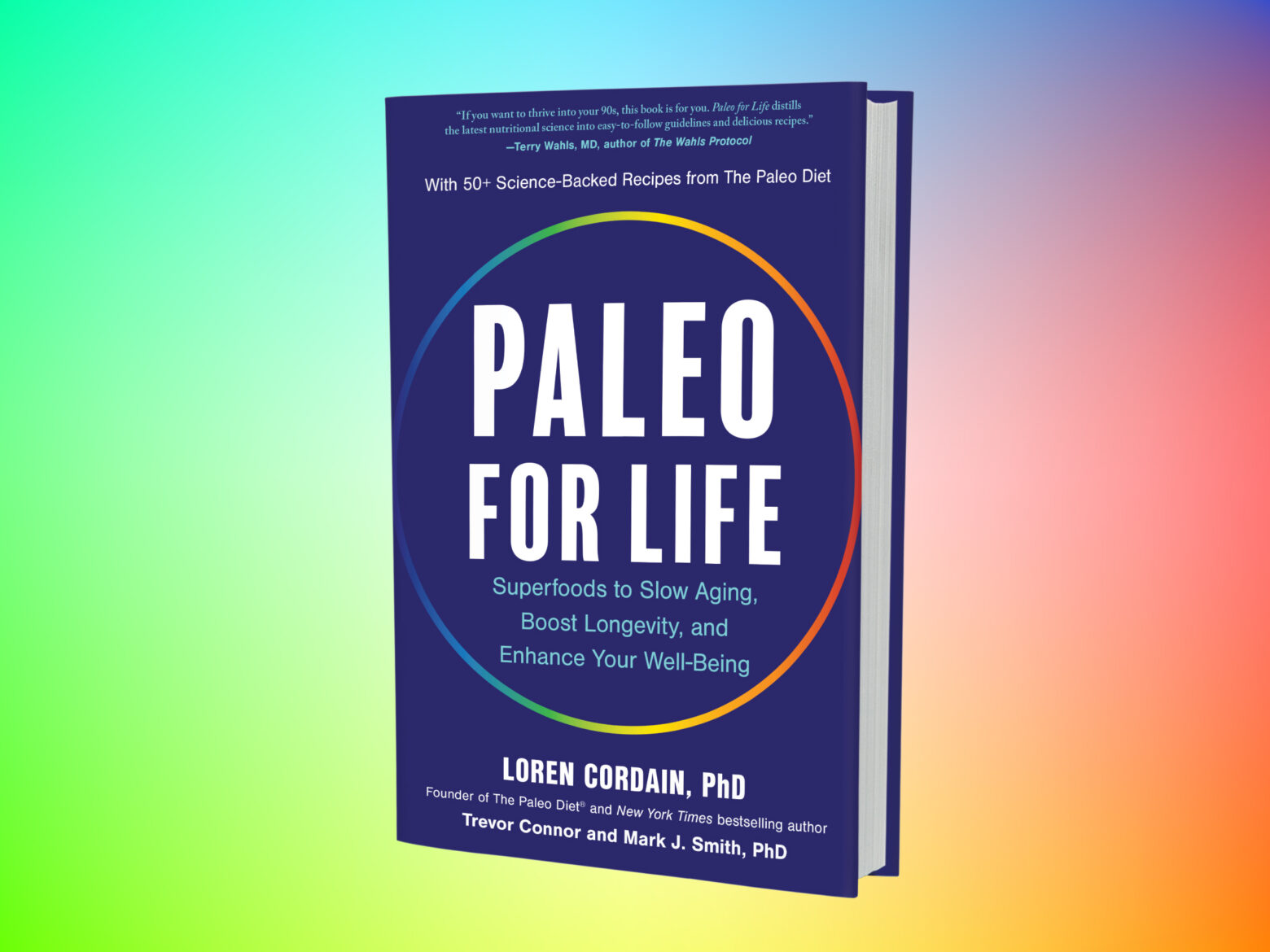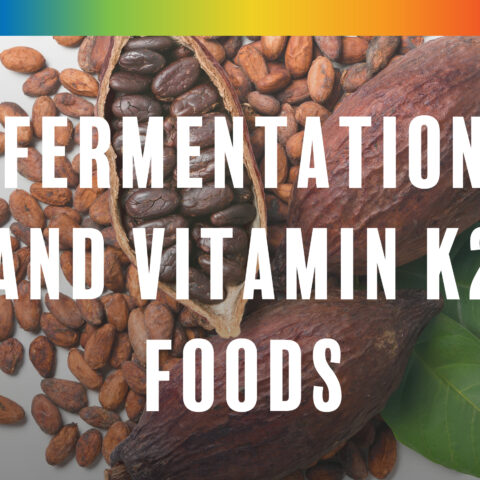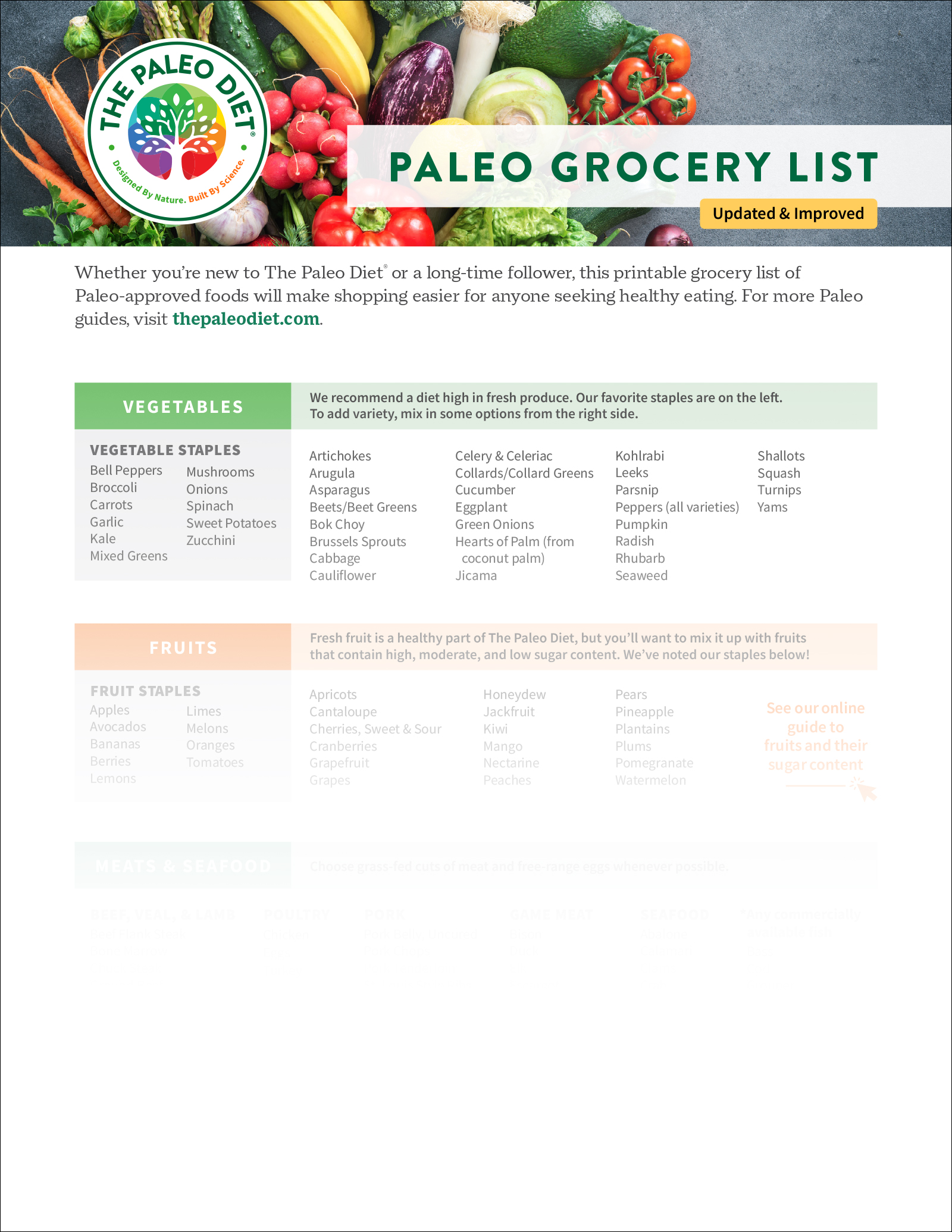Introducing Paleo for Life
Loren Cordain, Ph.D., M.S., Mark J. Smith, Ph.D., Ph.D., Trevor Connor, M.S.

You had a good reason to check out this article. Maybe your knees ached walking upstairs today, your doctor just put you on blood thinners, or you can’t seem to remember things the way you did when you were younger. It feels like your whole body is starting to fall apart, and you’re worried your health will keep going downhill as you get older. You can’t turn back the hands of time, but you can take simple steps right now to live a longer, healthier life. We’ve written this book to show you how.
In 2001, Loren Cordain published his first book, The Paleo Diet, introducing the public to the benefits of eating like our hunter-gatherer ancestors. Since then, we—Dr. Cordain and two of his former graduate students, Trevor Connor, MS, and Mark J. Smith, PhD—have continued our research to learn even more about the benefits of eating Paleo as we age.
This article is an excerpt adapted with permission from the book Paleo for Life: Superfoods to Slow Aging, Boost Longevity, and Enhance Your Well-Being by Dr. Loren Cordain, Trevor Connor, and Dr. Mark J. Smith. In this groundbreaking guide, the leaders of the Paleo nutrition movement reveal the longevity superfoods that can help you live longer and better, starting today.
Longevity and Living Well
Longevity statistics tell us that the average age of mortality, or the age at death, is 76 years old in the United States and on the decline for the first time in generations. But here’s an even more important marker to consider: the age of morbidity. That’s the age at which chronic illnesses such as arthritis, cancer, cardiovascular disease, diabetes, and neurological conditions like Alzheimer’s begin having negative impacts on our lives.
Too often, that starts happening as early as our 30s and 40s, which means many people face decades of ill health. According to the National Council on Aging, nearly 95% of Americans will have at least one chronic illness by the time they reach age 60, and almost 80% will battle two. The rest will remain blessedly healthy enough to enjoy travel, social activities, and an active retirement without chronic illness.
So what’s the secret? Why do certain people enjoy not only longer lives, but healthier ones as well? Genetics can certainly play a part. People with longer-lived parents have a better shot at living longer themselves, according to researchers. Otherwise, the one thing scientists agree on is that a poor diet can damage our health and lower our quality of life as we age. During the 20th century, the top killer in terms of disease shifted from viruses and pathogens to chronic inflammatory conditions. That’s due in part to modern medicine dramatically reducing deaths from infectious diseases in the last century.
Chronic Inflammation Comes from Food
It is widely agreed in scientific circles that the rise of inflammatory conditions, or what are commonly known as the diseases of civilization, is largely the result of what we eat. Many processed foods Americans consume today have a high glycemic load, which abnormally elevates blood sugar levels. That’s why so many of us experience metabolic syndrome as we age, an umbrella term for many conditions, including increased blood pressure, high blood sugar, excess body fat around the waist, and abnormal blood lipid profiles.
Together, these conditions increase the risk of heart disease, stroke, and type 2 diabetes. While we’re all aware of the issues with high blood sugar, that’s only one of many concerns caused by a highly processed diet.
Almost all of us hope to become healthy centenarians. Getting to that point in our lives takes a certain amount of luck plus the right roll of the genetic dice. Beyond that, it’s up to you. Dietary changes can have an immediate impact on both how good you feel and on slowing the aging process.
That’s where The Paleo Diet® comes in.
The Paleo Diet Is the Human Way to Eat
While Dr. Cordain is considered to be the original “father of The Paleo Diet,” he likes to emphasize that he didn’t create it. That job belonged to nature. Over the past three decades, Dr. Cordain and his colleagues from the fields of medicine, nutrition, and anthropology simply did the research and uncovered the science that stands as the foundation of the diet to this day.
Many of our most problematic foods have been introduced only within the past 200 years. In The Paleo Diet, Dr. Cordain’s first book, he explained the benefits of eating the way people did over the course of over a million years, right up until the rise of agriculture 12,000 years ago.
His argument was simple: By eating more like hunter-gatherer populations and eliminating foods introduced after humans began farming—such as grains, dairy, legumes, simple carbohydrates, and added salt—we can live healthier, longer lives. When you eat Paleo, you’re consuming the optimal nutrients for your body, literally programmed into your DNA.
The modern Paleo diet mimics the foods we would have consumed in our historic past. It’s true that many of the foods we evolved around no longer exist. For instance, our ancestors ate fruits and vegetables that tended to be smaller, had less sugar, and had more nutrient density—with a high mineral and vitamin content relative to their weight—compared to what’s available now.
70% of What We Eat Was Just Invented
When we compare The Paleo Diet to a modern Western diet, the differences are stark. Up to 70% of the foods typical of a Western diet have been available for only a few generations. These foods include vegetable oils, refined sugar, and processed foods. Because of how recently those changes have taken place, our bodies haven’t had ample time to adapt to consuming these foods. By returning to the diet we evolved eating, it’s possible to live both a longer and healthier life.
How Does The Paleo Diet Boost Healthy Aging?
As the science of nutrition advances, so does our understanding of the long-term health benefits of The Paleo Diet. For instance, one of the first large-scale meta-analyses on diet and chronic disease showing the benefits of The Paleo Diet was published in the journal Nutrients in December 2022.
A peer-reviewed meta-analysis is considered the gold standard for generating scientific consensus because it gathers all the prior research on a topic, discards poorly controlled or biased studies, and then reconciles the results of the remaining reliable studies into a consensus of findings.
The researchers conducting this meta-analysis study demonstrated how much the scientific body of evidence supporting The Paleo Diet has grown over the past 20 years. In considering 4,008 different studies, 68 articles were ultimately used to compare the health impacts of many of the most popular diets, including the Mediterranean diet, The Paleo Diet, the DASH (Dietary Approaches to Stop Hypertension) diet, a plant-based diet, a low-carbohydrate diet, a high-fat (ketogenic) diet, a typical Western diet, and a diet based on government guidelines.
Guess what? The Paleo Diet ranked highest when it comes to fighting inflammation, improving lipid panels, and lowering blood sugar—factors that contribute to the chronic conditions we associate with aging. Specifically, the Nutrients study highlighted these two key discoveries:
- The Paleo Diet performed best at improving the markers of chronic disease and proved to be the healthiest diet overall, with a score of 67%. DASH came in at 62%, followed by the Mediterranean diet at 57%. Not surprisingly, the traditional Western diet ranked lowest, at 36%. The government guidelines and plant-based diets also performed poorly, at 48.5% and 49.3%, respectively.
- The researchers concluded that the specific foods you choose to eat are the most important factor for improving chronic disease markers. Focusing on macronutrients alone, like following a low-fat or low-carb diet, isn’t an effective way to improve health.
Why This Book Now?
Now, nearly a quarter century after Dr. Cordain’s first book came out, we have written Paleo for Life to build on the scientifically sound themes of the original Paleo diet to chronicle new advances in science, zeroing in on specific Paleo superfoods that confer longevity-boosting effects, including reduced inflammation and greater resistance to age-related chronic illnesses. You’ll come away with a deeper understanding of our typical Western diet’s flaws and how individual foods can work as anti-aging catalysts. You’ll also discover the cultural history of some of these foods.
For instance, our entire food industry is based on engineering foods to be so highly addictive that people don’t want to give them up. Two of the most addictive ingredients are salt and sugar. In Paleo for Life, you’ll discover why we advocate for a lower-salt diet than is typically consumed and why it’s so essential to focus on “nutrient density,” a measure of the amount of nutrients (such as vitamins, minerals, and essential fatty acids) in a food relative to its calories.
Another key principle of The Paleo Diet is finding the optimal ratios of certain nutrients. We’ll show you how to do that as well. There is no such thing as one perfect food, but there is a perfect mix of foods that will help you reach that centenarian milestone while still celebrating good health.
Paleo for Life is full of news about individual foods and food groups that are specifically associated with longevity. You may have heard before that some of these foods, such as olive oil and chocolate, are healthy. What you’ll learn here is how, exactly, to choose the best foods to thwart the aging process. For example, which herbs and spices give you the biggest health-boosting bang for your buck? What fruits should consistently rank high on your grocery list?
What’s more, you’ll become familiar with lesser-known longevity nutrients that deserve to be in the spotlight, such as taurine, ergothioneine, PQQ, and berberine.
Finally, we’ll give you some tips for getting started on your Paleo journey and share a collection of more than 50 new recipes using the specific longevity superfoods we discuss in this book, along with a 14-day meal planner and autoimmune protocol (AIP) diet substitutes. You’ll be surprised by how easy—and how delicious—these meals are, and how much better you’ll feel after only a few weeks of adjusting your food choices to support a longer, healthier life.
Paleo for Life
Paleo for Life reveals how your favorite foods and flavors can help you live a longer, healthier life.
Discover the most potent antiaging superfoods and see how what’s on your plate connects to how you feel each day. Includes a two-week meal plan and 50+ superfood recipes.
Live longer and better, starting today, with Paleo for Life.




